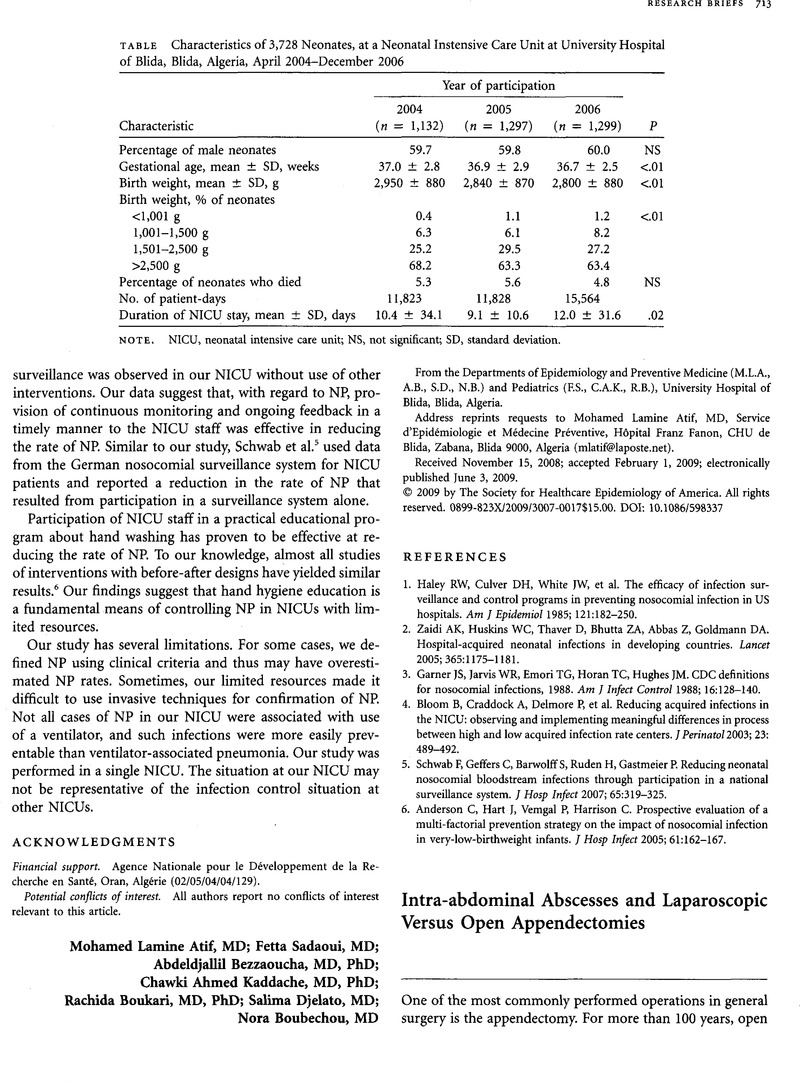Crossref Citations
This article has been cited by the following publications. This list is generated based on data provided by Crossref.
Li, Xiaohang
Zhang, Jialin
Sang, Lixuan
Zhang, Wenliang
Chu, Zhiqiang
Li, Xin
and
Liu, Yongfeng
2010.
Laparoscopic versus conventional appendectomy - a meta-analysis of randomized controlled trials.
BMC Gastroenterology,
Vol. 10,
Issue. 1,
Fleming, Fergal J.
Kim, Michael J.
Messing, Susan
Gunzler, Doug
Salloum, Rabih
and
Monson, John R.
2010.
Balancing the Risk of Postoperative Surgical Infections.
Annals of Surgery,
Vol. 252,
Issue. 6,
p.
895.
Mavros, Michael N.
Athanasiou, Stavros
Alexiou, Vangelis G.
Mitsikostas, Pantelis K.
Peppas, George
and
Falagas, Matthew E.
2011.
Risk Factors for Mesh‐related Infections After Hernia Repair Surgery: A Meta‐analysis of Cohort Studies.
World Journal of Surgery,
Vol. 35,
Issue. 11,
p.
2389.
McCartan, D. P.
Fleming, F. J.
and
Hill, A. D. K.
2012.
Patient and surgeon factors are associated with the use of laparoscopy in appendicitis.
Colorectal Disease,
Vol. 14,
Issue. 2,
p.
243.
Staszewicz, W.
Eisenring, M.-C.
Bettschart, V.
Harbarth, S.
and
Troillet, N.
2014.
Thirteen years of surgical site infection surveillance in Swiss hospitals.
Journal of Hospital Infection,
Vol. 88,
Issue. 1,
p.
40.





